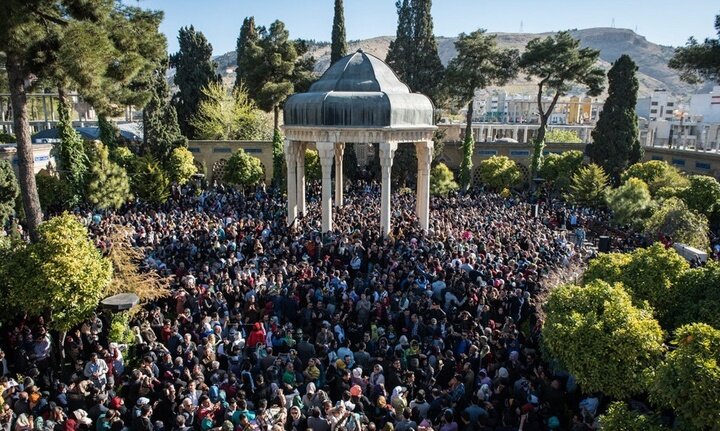6m museum tickets sold during Nowruz holidays
TEHRAN – Various historical sites and museums across Iran witnessed more than 6m visitors in the course of the Persian New Year’s holidays, according to the statistics revealed by the Ministry of Cultural Heritage, Tourism and Handicrafts.

As the Nowruz travels started, a total of 6,274,824 visits to museums and historical sites nationwide have been recorded from March 14 till March 31.
Attracting the whole number of 1,329,122 visitors, Fars province stands in first place.
Isfahan with 556,661, Tehran with 369,950, Khuzestan with 227,401, Razavi Khorasan with 195,573, Kermanshah with 163,594, Kerman with 155,641, East Azarbaijan with 113,407, Lorestan with 107,607 and Hamedan with 105,146 visitors are the other provinces witnessing the outstanding number of visits during spring holidays.
As per records, the most frequented destinations, in descending order, were Hafeziye complex with 378,151, UNESCO-listed Persepolis with 311,514, Sa’di mausoleum with 223,314, Saadabad Cultural and Historical Complex with 149,498, Karim Khan Citadel with 140,963, Fin Garden with 132, 840, Chehel Sotoun Palace with 123,661 visits, Ali Qapu with 113,932 and Shushtar Historical Hydraulic system with 111,139 visits.
Albeit in terms of the highest amount of ticket sales throughout the time of Nowruz holidays, the museums and historical sites across the country are ranked as follows: Saadabad Cultural and Historical Complex, UNESCO-licensed Golestan Palace, UNESCO-listed Persepolis, Hafeziye Complex, Niavaran Palace Historical-Cultural Complex, Sa’di mausoleum, Fin Garden, Karim Khan Citadel, Chehel Sotoun Palace and Falak-ol-Aflak Castle.
Iran, an ancient land steeped in history, boasts one of the world’s oldest continuous major civilizations, with settlements dating back to 4000 BC. It is adorned with a wealth of cultural treasures, including bazaars, museums, mosques, bridges, bathhouses, madrasas, gardens, and diverse natural landscapes, complemented by 27 UNESCO World Heritage sites.
While commonly associated with the first Persian Empire ruled by the Achaemenids (ca. 550–330 BC), under notable sites such as Pasargadae and Persepolis, Iran’s historical tapestry is far richer. The country is adorned with numerous prehistorical sites predating the Achaemenid era. These include the Burnt City in Sistan-Baluchestan, Tepe Sialk in Kashan, Susa and Chogha Zanbil in the Khuzestan province, and Ecbatana in Hamedan.
Viewed through a broader lens, Iranian history unfolds in two distinct eras: pre-Islamic and Islamic. The rise of the Medes in 625 BC marked the unification of Iran into a nation and empire. However, it was the Islamic conquest of Persia (633–656) that signaled a pivotal moment, bringing an end to the powerful Sassanid Empire (224–651) and reshaping the course of the nation’s history.
source: tehrantimes.com